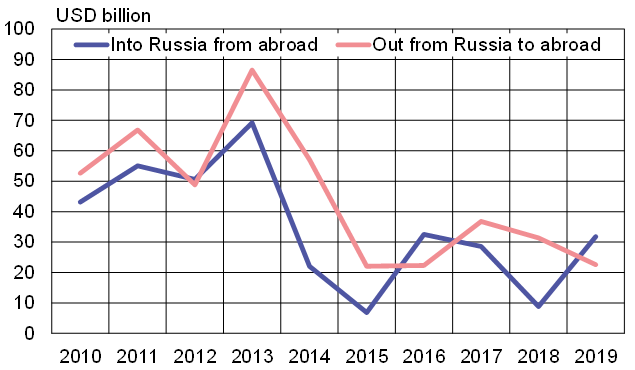BOFIT Weekly Review 25/2020
While FDI inflows to Russia grew last year, they will likely contract sharply this year
The net inflow of foreign direct investment into Russia last year was $32 billion, a huge jump from the previous year’s exceptionally weak numbers. Last year saw also new equity investment instead of just reinvested profits. In contrast, the net outward FDI flow from Russia shrank last year to $23 billion. UNCTAD’s latest World Investment Report expects FDI flows, both globally and in the specific case of Russia, to contract by 30–40 % this year due to the corona pandemic.
The stock of FDI in Russia at the end of last year amounted to around $590 billion (35 % of GDP). Broken down by branch, the most investment (23 %) went to mineral extraction industries (includes oil & gas), manufacturing (20 %), finance (17 %) and trade (15 %). The stock of Russian FDI abroad amounted to nearly $410 billion.
While FDI is often considered an important indicator of the degree to which a country is integrated with the global economy, phantom investment flows may blur the picture. Phantom investment refers to flows that are conducted via third countries for such purposes as tax planning. According to a working paper published by the IMF last year, phantom investments could account for as much as 40 % of global FDI flows. In the article, it is estimated that in Russia’s case about a quarter of FDI inflows to Russia are actually of domestic origin. Only in China the share of FDI inflows with domestic origin is slightly larger. UNCTAD’s 2017 estimate found that Russia’s main providers of FDI (with third-country effects removed) were the US, UK and Germany.
The net inflow of FDI to Russia grew notably last year

Sources: CBR and BOFIT.